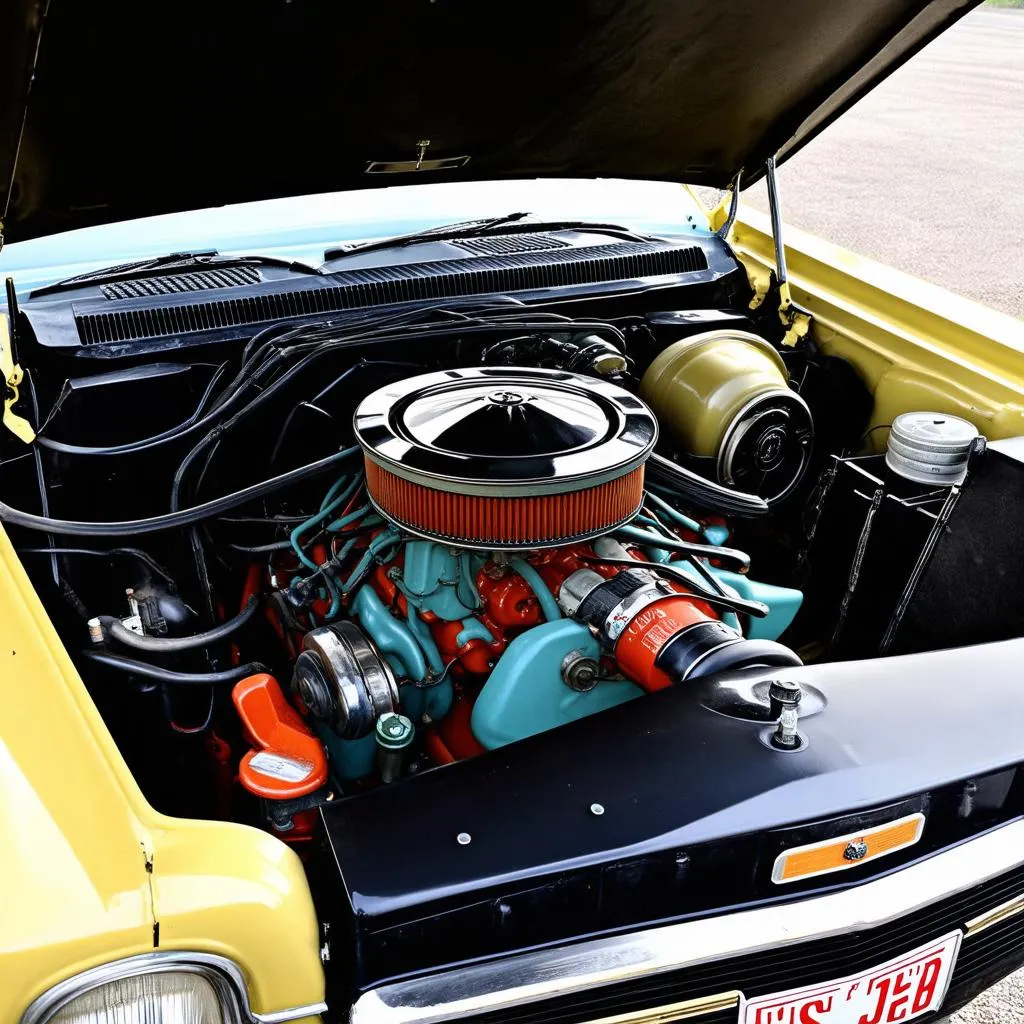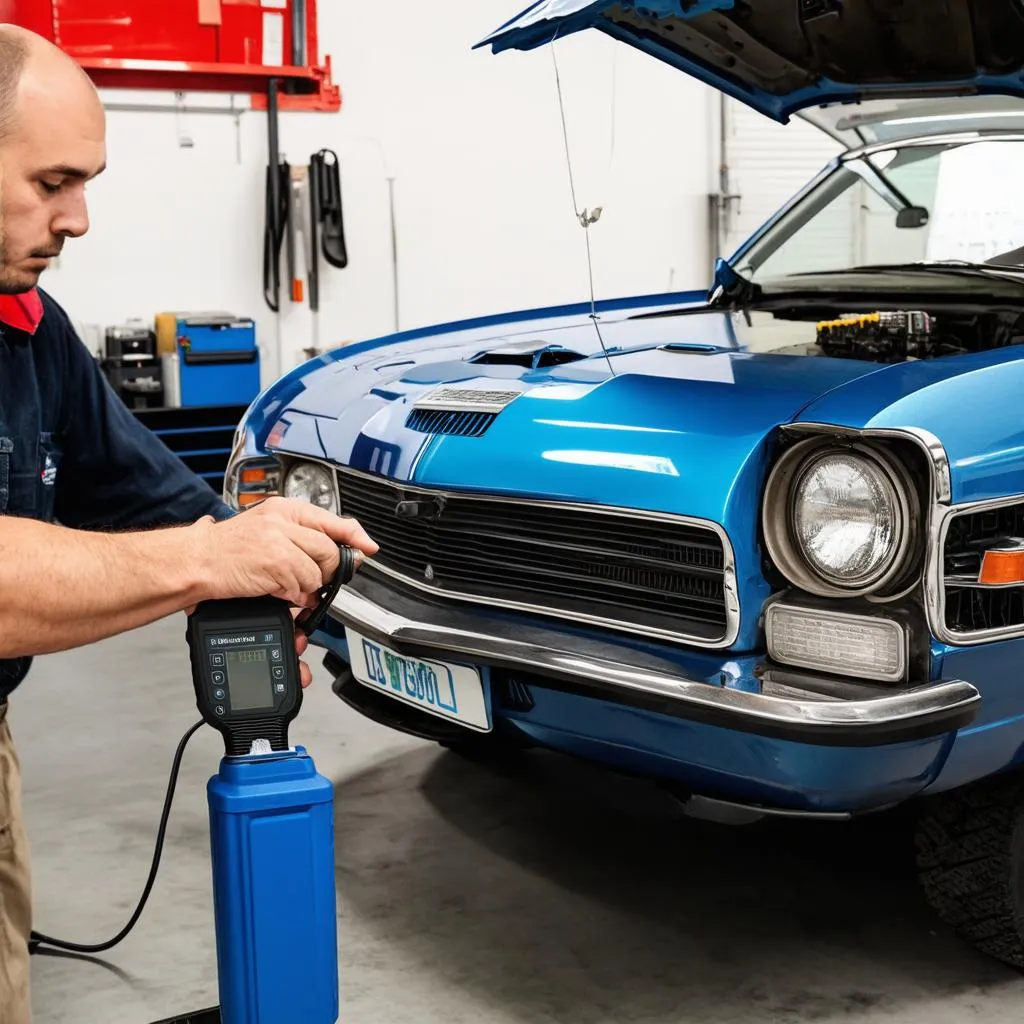Imagine this: You’re cruising down a California highway in your trusty ’93 Jeep Wagoneer, wind in your hair, the open road beckoning. Suddenly, the “Check Engine” light pops up, casting a pall over your idyllic drive. Frustrating, right? This scenario is all too familiar for many Wagoneer owners. Understanding those cryptic OBD and OBD1 codes is key to diagnosing and fixing the issue. This guide dives deep into the world of ’93 Jeep Wagoneer diagnostic codes, helping you decipher the language of your vehicle.
Decoding the ’93 Wagoneer’s Language
Before we jump into the codes, let’s clarify what we’re dealing with. Your ’93 Jeep Wagoneer utilizes the OBD1 system, a precursor to the more sophisticated OBD2 systems found in modern vehicles. While simpler, OBD1 can still feel like trying to decipher ancient hieroglyphs without a Rosetta Stone.
What does this mean for you?
Understanding the context of your Wagoneer’s system is vital. For example, a “code 12” in a ’95 Honda Civic will mean something entirely different than in your ’93 Wagoneer.
Why OBD1 Codes Matter
Think of your Wagoneer’s engine as its heart. Just like a doctor uses an EKG to monitor your heart, OBD1 codes offer a glimpse into your engine’s health. They signal potential issues, allowing you to address them before they snowball into costly repairs.
Here are some common reasons why your ’93 Wagoneer might be throwing codes:
- Faulty oxygen sensor: This sensor monitors your exhaust gases and plays a critical role in fuel efficiency. A malfunctioning sensor can send your engine into a tailspin, leading to poor performance and increased emissions.
- Malfunctioning EGR valve: The EGR (Exhaust Gas Recirculation) valve helps reduce emissions. A faulty valve can disrupt your engine’s combustion process, potentially causing rough idling or stalling.
- Failing MAP sensor: The MAP (Manifold Absolute Pressure) sensor measures the air pressure in your intake manifold. A failing sensor can confuse your engine’s computer, leading to misfires, poor acceleration, or even stalling.
Common ’93 Jeep Wagoneer OBD1 Codes
While a complete list of codes is beyond the scope of this guide, let’s look at a few common ones and their potential implications:
- Code 12: This typically indicates a recent battery disconnect or a problem with the battery connection.
- Code 21: This code often points to a faulty oxygen sensor, which can significantly impact fuel economy and engine performance.
- Code 33: This code suggests a problem with the A/C system pressure, potentially indicating a leak in the system.
Remember: These are just a few examples, and the specific meaning of a code can vary. Always consult a reliable OBD1 code resource for your ’93 Jeep Wagoneer for accurate interpretation.
 Engine bay of a Jeep Wagoneer
Engine bay of a Jeep Wagoneer
Troubleshooting Tips for the Determined DIYer
Feeling empowered to tackle those codes head-on? Here are a few tips to guide your diagnostic journey:
- Locate the Diagnostic Connector: In your ’93 Wagoneer, you’ll typically find this connector under the dashboard on the driver’s side. It resembles a large, flat plug.
- Retrieve the Codes: With the engine off, use a jumper wire to connect the two terminals on the diagnostic connector. Then, turn the ignition to the “On” position without starting the engine. Observe the “Check Engine” light. It will flash a series of long and short blinks representing the codes.
- Decode and Research: Using a reputable OBD1 code chart for your Wagoneer, decipher the blinking light sequences.
- Consult a Professional if Needed: If the codes seem daunting or you’re uncomfortable tackling repairs yourself, don’t hesitate to consult a qualified mechanic specializing in Jeep vehicles.
 Mechanic connecting an OBD1 scanner to a car's diagnostic port
Mechanic connecting an OBD1 scanner to a car's diagnostic port
Beyond the Codes: Essential Maintenance Tips
While understanding OBD1 codes is crucial, preventative maintenance is equally vital for your ’93 Wagoneer’s longevity.
Here are a few tips to keep it running smoothly:
- Regular Oil Changes: Sticking to your Wagoneer’s recommended oil change schedule is crucial for engine health.
- Spark Plug Inspection: Worn spark plugs can lead to misfires and reduced performance.
- Air Filter Replacement: A clean air filter ensures optimal airflow to your engine, improving fuel efficiency.
FAQs About ’93 Jeep Wagoneer OBD1 Codes
Q: Can I use a generic OBD2 scanner on my ’93 Wagoneer?
A: Unfortunately, no. ’93 Wagoneers use the OBD1 system, which requires a specific OBD1 scanner or the manual code retrieval method mentioned earlier.
Q: My “Check Engine” light is on, but the engine seems fine. Should I be worried?
A: It’s always best to err on the side of caution. Even if your engine seems fine, ignoring a “Check Engine” light can lead to more significant problems down the road.
Q: I fixed the issue, but the code is still present. What should I do?
A: After repairs, you need to reset the code by disconnecting the battery for a few minutes.
Need Help with Your Diagnostics Tool Setup?
We understand that dealing with car diagnostics can be complex. If you need assistance with setting up your diagnostic tools, our team of auto repair experts is available 24/7 to help. Contact us via WhatsApp at +84767531508, and we’ll be happy to guide you through the process.
Keeping Your ’93 Jeep Wagoneer on the Road
By understanding your Wagoneer’s OBD1 system, you’re empowered to tackle those pesky “Check Engine” lights head-on. Remember, a little knowledge goes a long way in keeping your classic SUV running smoothly for years to come.
Have you encountered any peculiar OBD1 codes in your ’93 Wagoneer? Share your experiences and questions in the comments below!